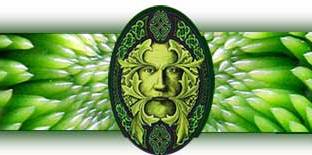 If there were only one color I would possibly be wearing for the next month it would have to be khaki. Ewww, why khaki some would surely ask. Out of all of the colors that could possibly be chosen — such as the majestic hues of blue, or the reigning pompous purples, just think of it — magnetic magenta, gorgeous greens, optical oranges, risqué reds, and of course, the simpleness of the shearists blacks.
If there were only one color I would possibly be wearing for the next month it would have to be khaki. Ewww, why khaki some would surely ask. Out of all of the colors that could possibly be chosen — such as the majestic hues of blue, or the reigning pompous purples, just think of it — magnetic magenta, gorgeous greens, optical oranges, risqué reds, and of course, the simpleness of the shearists blacks.
The world of color is as basic and boring that one could imagine. Oh but predicated upon various findings, a color circle, based on red, yellow and blue, is traditional in the field of art. Sir Isaac Newton developed the first circular diagram of colors in 1666. Since then, scientists and artists have studied and designed numerous variations of this concept. Differences of opinion about the validity of one format over another continue to provoke debate.
Interesting in the matter of color — there are three (3) basic or Primary colors as listed above, red, yellow, and blue. This is where it gets really interesting for me and that is in the Secondary colors of green, orange and purple. These are the colors formed by mixing the primary colors.
And then of course the Tertiary colors of yellow-orange, red-orange, red-purple, blue-purple, blue-green and yellow-green. These are the colors formed by mixing a primary and a secondary color. That’s why the hue is a two-word name, such as blue-green, red-violet, and yellow-orange.
Okay, so far so good but what does this have to do with what color I would wear for a month? As for me khaki comes as close to neutral as just about any of the tertiary colors. There are also many, many shades of khaki ranging from tan, to copper, and a lighter beige. Moreover, in the event that one color can be worn regardless of shade, or hue, it does appear by my own demographics that this color in particular, blends with other variations of khaki or any other of the three sections of colors.
In visual experiences, harmony is something that is pleasing to the eye. It engages the viewer and it creates an inner sense of order, a balance in the visual experience. When something is not harmonious, it’s either boring or chaotic.
In summary, extreme unity leads to under-stimulation, extreme complexity leads to over-stimulation. Harmony is a dynamic equilibrium. With compliments to Jill Morton who is the copyright owner of the image below.
Filed under: Americana, postaday2011, The Daily Post | Tagged: Colors, Effects on Brain, Equilibrium, Khaki | 2 Comments »







